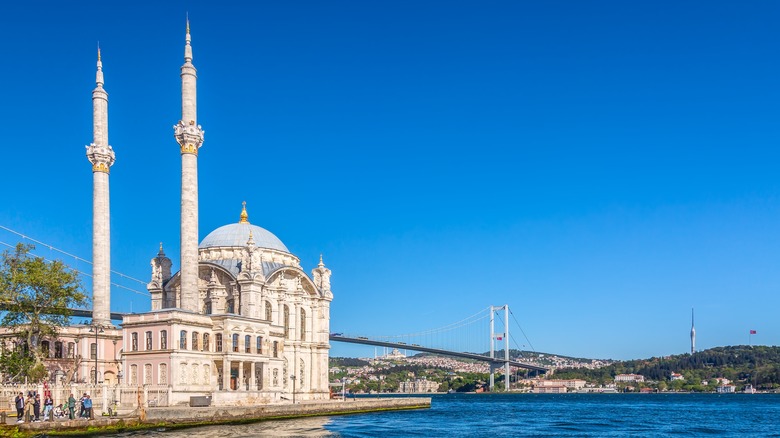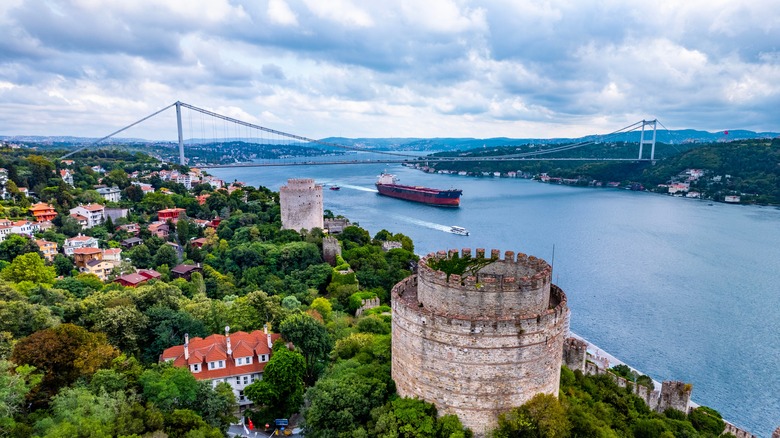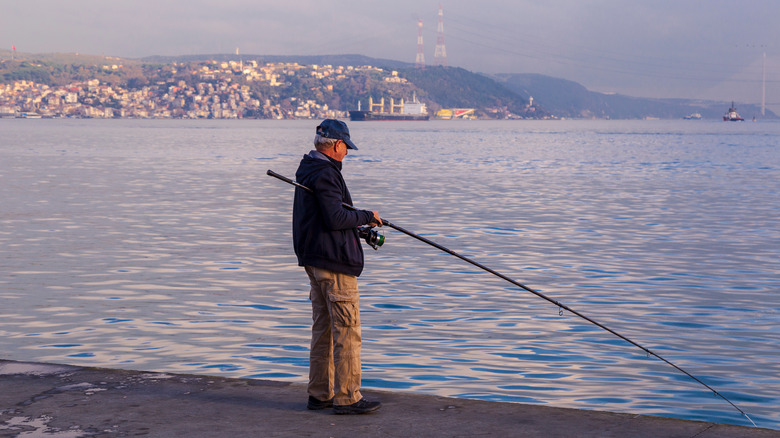One Of Europe's Prettiest Promenades Is A Turkish Waterfront Gem With Postcard-Worthy Views
It's easy to see why Emperor Constantine founded his "New Rome" in A.D. 330 on the site of modern-day Istanbul. This geographic crossroads of Europe and Asia offered unparalleled advantages in defense and trade that kept the empire humming until Mehmed the Conqueror breached the walls in 1453. The Bosphorus Straight is its prime jewel. Running north-south, it separates Istanbul into European and Asian sides and connects the Black Sea to the Sea of Marmara. Along its bright turquoise waters, ages of history have passed, while its hilly, green banks gradually filled with castles, mansions, and villages over the centuries. On the north end of the European side, these have coalesced into a dynamic string of neighborhoods woven together by perhaps the prettiest promenade in the world — one more reason why Istanbul is one of the best cities for layovers.
It goes by many names, including the Bosphorus Coastal Walkway, but it's not a single, unified trail. Instead, it's a piecemeal network that mostly runs along the water, but with a few breaks. Nor is there any official start or finish, but the most popular stretch runs between Ortaköy and Sarıyer for about 12 miles. This trek alone can easily take a day and turn legs to jelly, but it's all immensely beautiful, with glistening waves on one side and epic history on the other. While busy in spots, it offers one more place to escape Istanbul's crowds — and a much-needed Bosphorus breath.
Ortaköy to Rumeli Fortress
While the Bosphorus walkway doesn't really break out until north of Ortaköy, the Bosphorus-side neighborhood makes a good starting point. It's a favorite on its own, thanks to the charming pedestrian-friendly zone filled with cafes, restaurants, gaming dens, and dispensers of kumpir, or "jacket potatoes," a street-food favorite. The neo-Baroque Ortaköy Mosque is also one of Istanbul's most beautiful landmarks and a great photo op. The next stop, Arnavutköy, hosts a repository of elegant Ottoman seaside mansions, many in art nouveau style. This alone makes it worth a wander. The seaside fish restaurants may tempt, but try to stifle the stomach until the next stop, where Michelin stars begin to sparkle.
Bebek, or "the baby," is one of Istanbul's most elite neighborhoods and the place to make a scene on the Bosphorus, especially if you are young and wealthy. Primarily, this takes place in the restaurants, cafes, boutiques, and nightclubs that line its shores. Two Michelin-starred restaurants make their home in Bebek, too, but if it's breakfast or brunch, walk 20 minutes farther up the Bosphorus to Rumeli Fortress, built in 1452 during the final siege of Constantinople. From its ramparts and walls, you catch some of Istanbul's best views of the Bosphorus, and down below are fantastic outdoor eateries, where you just might eat the best breakfast of your life.
Emirgan to Sarıyer
North of Rumeli Fortress, the Bosphorus promenade becomes increasingly quiet and windswept. The first stop, The Sakıp Sabancı Museum, is elite. Arguably the city's best art museum, it hosts collections of calligraphy, painting, decorative arts, and archaeological artifacts in a mansion from 1927. For art with a more contemporary flavor — and technology — Borusan Contemporary is also in the area. A candidate for the Bosphorus' loveliest cove comes in the next stop, Istinye. Dozens of restaurants and cafes along the water make good use of this, but the neighborhood is also home to the super posh Istinye Park mall, an experience in itself.
The next stretch of the walkway runs about an hour on foot, but this is where you really start getting the Bosphorus to yourself, as you pass Ottoman mansions and consulate compounds to reach Tarabya. Once famous for its healing spring waters, the neighborhood was an escape for Byzantine and Ottoman elites. Today, the elegant bay remains comparatively peaceful, and The five-star Grand Tarabya Hotel carries on the healing traditions in its 48,000-square-foot spa bathed in Bosphorus views. The last leg runs another hour, stopping at the Sadberk Hanım Museum for ancient Turkish and Islamic art. End the journey in the Sarıyer neighborhood, with a slice of its delicious namesake Sarıyer Börek. Otherwise, be sure to follow Rick Steves' advice on how to fully appreciate today's Istanbul and visit other spots where people work, shop, and live.


